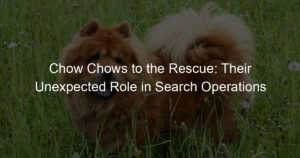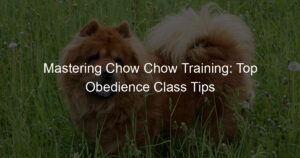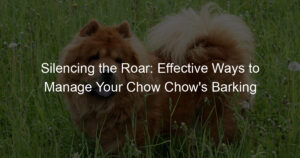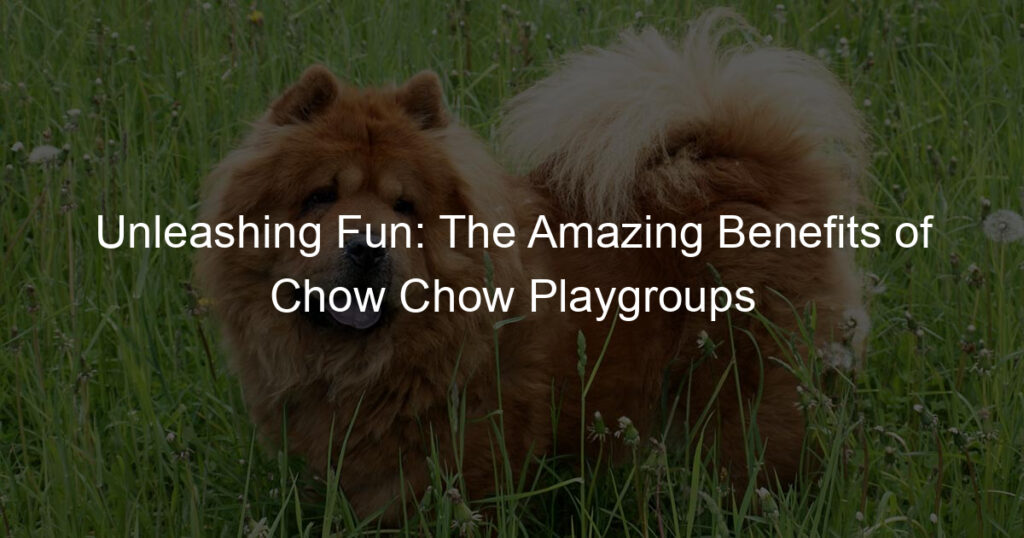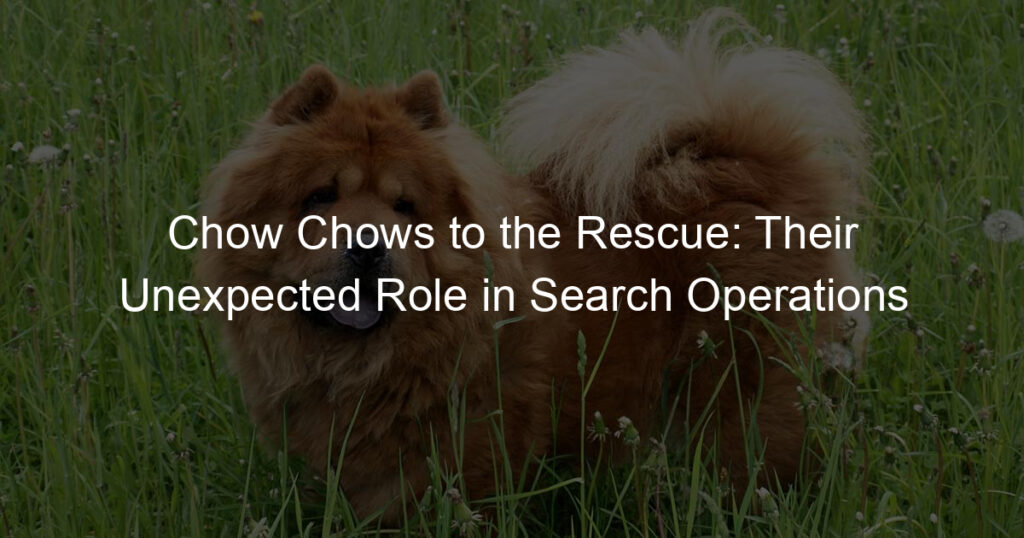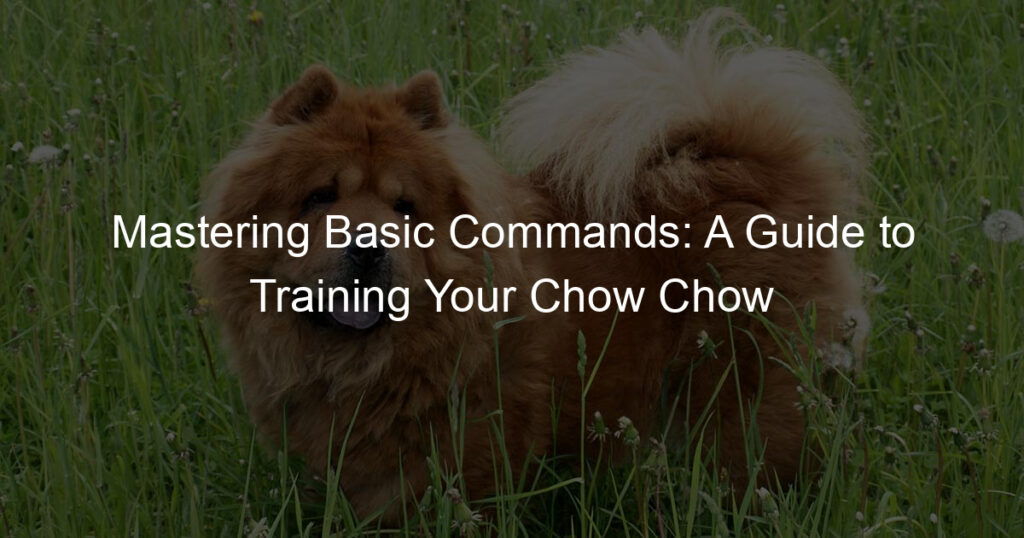
Introduction: Prepping Your Chow Chow for a New Baby
Welcome to our comprehensive guide on preparing your Chow Chow for a new baby. This guide is designed to help you understand the importance of preparation and provide you with a step-by-step process to ensure a smooth transition for your furry friend. Let’s dive in!
Preparing your Chow Chow for a new baby is crucial. This preparation helps reduce stress for both your pet and your family. It’s important to remember that your Chow Chow has been the center of attention and the new baby might be a big change for them. By preparing your Chow Chow in advance, you can help them adjust to the new family member and maintain a peaceful household.
This guide will take you through understanding your Chow Chow’s behavior with a new sibling, training your Chow Chow for a new family member, introducing your Chow Chow to the new sibling, and how they adjust to the new family member. We will also share some case studies of Chow Chows and new babies. By the end of this guide, you will be well-equipped to handle this significant change in your Chow Chow’s life.
Remember, every Chow Chow is unique, and what works for one might not work for another. It’s all about understanding your pet and tailoring the approach to suit their needs. Let’s get started on this exciting journey!
Understanding Chow Chow Behavior with New Sibling
Chow Chows are unique dogs with distinct behaviors and temperaments. Understanding these behaviors is crucial when introducing a new sibling into the family. Let’s delve into the typical Chow Chow behavior and how they may react to a new baby.
-
Typical Chow Chow behavior
Chow Chows are known for their loyalty and aloofness. They are often reserved and independent, preferring to keep to themselves rather than seeking attention. They are protective of their family and territory, which can make them appear standoffish to strangers. However, they are also known to be very loving and affectionate with their family members.
Chow Chows are intelligent and can be stubborn at times. They need consistent training and socialization from a young age to ensure they grow up to be well-behaved and sociable dogs. Despite their independent nature, they thrive on routine and structure, which can make them excellent family pets.
-
How Chow Chows may react to a new baby
Introducing a new baby to a Chow Chow can be a challenging task. Given their protective nature, they may initially see the new baby as an intruder. They may show signs of anxiety or stress, such as excessive barking, growling, or even attempting to hide.
However, with proper preparation and training, Chow Chows can adjust to the new family member. They can even become protective and caring towards the baby. It’s important to remember that every Chow Chow is different, and their reactions can vary. Patience, consistency, and understanding are key when introducing a new baby to a Chow Chow.
In conclusion, understanding your Chow Chow’s behavior is crucial when introducing a new sibling into the family. With patience and proper training, your Chow Chow can adjust and form a strong bond with the new family member.
Training Your Chow Chow for a New Family Member
Bringing a new family member home can be a big change for everyone, including your Chow Chow. The good news is, with the right training, your Chow Chow can learn to accept and even love their new sibling. Let’s explore the initial steps in training your Chow Chow for this exciting transition.
Initial Steps in Training
Training your Chow Chow for a new family member involves two key steps: introducing the concept of a new sibling and creating a positive association with the baby.
-
- Introducing the concept of a new sibling
Start by helping your Chow Chow understand that a new family member is on the way. You can do this by making small changes around the house that mimic what life will be like once the baby arrives. For example, you can start using baby products like lotions and powders so your Chow Chow gets used to the new smells. You can also play sounds of a baby crying or cooing to help your dog get used to these new sounds.
-
- Creating a positive association with the baby
The next step is to create a positive association with the baby. You can do this by rewarding your Chow Chow with treats and praise whenever they behave well around baby items or sounds. This will help them associate the baby with positive experiences. Remember, it’s important to be patient and consistent with your training. It may take some time, but your Chow Chow will eventually learn to accept and even love their new sibling.
In conclusion, training your Chow Chow for a new family member involves introducing the concept of a new sibling and creating a positive association with the baby. With patience and consistency, your Chow Chow can learn to accept and even love their new sibling. Stay tuned for our next section where we will discuss advanced training techniques.
Advanced Training Techniques
Now that we’ve covered the initial steps in training your Chow Chow for the arrival of a new family member, let’s delve into some advanced techniques. These methods will help your pet adjust to the baby’s presence and familiarize themselves with the baby’s scent.
- Simulating Baby’s Presence
One effective way to prepare your Chow Chow for the arrival of a new baby is by simulating the baby’s presence. This can be done by playing recordings of baby sounds, like crying or laughing, at a low volume. You can gradually increase the volume over time to help your pet get used to these new sounds.
Another method is to use a doll to mimic the baby’s presence. Carry the doll around the house, place it in the baby’s crib, and even pretend to feed or change it. This will help your Chow Chow understand that the baby will be a permanent part of the family.
- Gradual Introduction to Baby’s Scent
Chow Chows have a keen sense of smell, and introducing them to the baby’s scent before the baby arrives can be beneficial. Start by bringing home a blanket or piece of clothing that the baby has worn. Let your Chow Chow sniff it and reward them with treats and praise for calm behavior. This will help them associate the baby’s scent with positive experiences.
Remember, the key to these advanced training techniques is patience and consistency. It may take some time for your Chow Chow to adjust to these new experiences, but with your guidance and reassurance, they will soon see the new baby as a beloved member of the pack.
Introducing Chow Chow to New Sibling
Introducing your Chow Chow to a new sibling can be a significant event. It’s important to approach this with care and understanding. Here are some key steps to follow:
-
- First introduction: Dos and Don’ts
The first introduction is critical in setting the tone for your Chow Chow’s relationship with the new sibling. Here are some dos and don’ts:
-
-
- Do allow your Chow Chow to sniff the new sibling’s belongings before the actual introduction. This helps them get used to the new scent.
- Don’t force the Chow Chow to interact with the new sibling. Let them approach at their own pace.
- Do reward your Chow Chow for calm behavior around the new sibling. This reinforces positive associations.
- Don’t scold your Chow Chow if they seem nervous or unsure. This could lead to negative associations.
- Maintaining a calm environment
-
Chow Chows respond best to calm and predictable environments. When introducing your Chow Chow to a new sibling, try to minimize loud noises and sudden movements. Maintain your Chow Chow’s regular routine as much as possible to help them feel secure.
-
- Monitoring Chow Chow’s reaction
Keep a close eye on your Chow Chow’s behavior during and after the introduction. Look for signs of stress, such as excessive panting, drooling, or avoidance behaviors. If you notice these signs, give your Chow Chow some space and try again later. Remember, patience is key in this process.
In conclusion, introducing your Chow Chow to a new sibling can be a smooth process if done correctly. Remember to respect your Chow Chow’s pace, maintain a calm environment, and monitor their reactions closely. With time and patience, your Chow Chow and new sibling can form a strong bond.
Chow Chow Adjustment to New Family Member
When a new family member, especially a baby, arrives, it can be a significant change for everyone in the household, including your Chow Chow. The adjustment period can be a challenging time, but with patience and understanding, your Chow Chow can successfully adapt to the new addition.
Signs of Successful Adjustment
It’s important to keep an eye out for signs that your Chow Chow is adjusting well to the new family member. Here are a few key indicators to look out for:
- Positive interactions with the baby: One of the most obvious signs of successful adjustment is positive interaction between your Chow Chow and the baby. This could include the dog showing curiosity towards the baby, gently sniffing the baby, or calmly sitting or lying down near the baby. Remember, these interactions should always be supervised to ensure the safety of both the baby and the Chow Chow.
- Chow Chow’s calm and relaxed behavior: Another sign of successful adjustment is if your Chow Chow remains calm and relaxed in the presence of the new baby. This could mean that the dog does not show signs of anxiety or stress when the baby is around, and continues to eat, sleep, and play as usual. If your Chow Chow is behaving in this manner, it’s a good sign that they are adjusting well to the new family member.
Remember, every Chow Chow is unique and may react differently to a new family member. It’s important to be patient and give your dog time to adjust. With love, understanding, and positive reinforcement, your Chow Chow can successfully adapt to the new addition to your family.
Dealing with Adjustment Issues
Adjustment issues can be a common occurrence when introducing your Chow Chow to a new family member. It’s crucial to understand how to identify signs of stress or discomfort and know the steps to take when these issues arise.
- Identifying Signs of Stress or Discomfort
Chow Chows, like humans, can experience stress and discomfort when their environment changes. They may not understand what’s happening, leading to anxiety. Here are some signs to look out for:
- Excessive barking or whining
- Changes in eating or sleeping habits
- Aggressive behavior towards the new baby
- Withdrawal from family activities
If you notice any of these signs, it’s essential to address the issue promptly to ensure your Chow Chow’s well-being and the safety of your new baby.
- Steps to Take When Adjustment Issues Arise
When you notice signs of stress or discomfort in your Chow Chow, here are some steps you can take:
- Provide a safe space: Give your Chow Chow a quiet, comfortable space where they can retreat when they feel overwhelmed.
- Keep routines: Try to maintain your Chow Chow’s regular feeding, walking, and playtime schedules.
- Positive reinforcement: Reward your Chow Chow for positive behavior around the new baby. This can include treats, praise, or extra playtime.
- Professional help: If your Chow Chow’s behavior doesn’t improve or worsens, consider seeking help from a professional dog trainer or behaviorist.
Remember, patience and understanding are key during this adjustment period. With time, your Chow Chow will learn to accept and love their new family member.
Case Studies: Chow Chow and New Baby
Let’s delve into two real-life scenarios that highlight the process of introducing a Chow Chow to a new baby. These case studies will provide you with practical insights and valuable lessons.
-
Case Study 1: Successful Introduction and Adjustment
Meet Max, a 3-year-old Chow Chow, and his family who recently welcomed a new baby girl, Lily. Max’s family started preparing him for Lily’s arrival months in advance. They gradually changed Max’s routine, introduced baby sounds and smells, and even practiced with a doll. When Lily finally came home, Max was curious but not overly excited.
Max’s family made sure to give him plenty of attention and reassured him with positive reinforcement. They also set boundaries for Max, teaching him that he couldn’t go into Lily’s room without an adult. Over time, Max adjusted well to Lily’s presence and became protective of her. This case shows the importance of early preparation and consistent training.
-
Case Study 2: Overcoming Initial Adjustment Issues
Next, we have Bella, a 5-year-old Chow Chow, who had a harder time adjusting to her new baby brother, Ethan. Bella showed signs of jealousy and anxiety when Ethan arrived. She would bark loudly whenever Ethan cried and tried to hoard her family’s attention.
Bella’s family decided to seek help from a professional dog trainer. The trainer suggested that they spend quality time with Bella, reward her for good behavior around Ethan, and create a safe space for her. It took a few weeks, but Bella eventually learned to accept Ethan. This case underscores the need for patience and professional help when necessary.
These case studies demonstrate that every Chow Chow’s reaction to a new baby can be different. However, with proper preparation, patience, and possibly professional help, your Chow Chow can successfully adjust to the new family member.
Conclusion: Your Guide to Introducing Chow Chow to New Sibling
As we wrap up this comprehensive guide, let’s take a moment to recap the key points and share some final thoughts on introducing your Chow Chow to a new sibling. Remember, every dog and every family is unique, so what works for one might not work for another. However, with patience, understanding, and proper training, you can help your Chow Chow adjust to the new family member and foster a loving relationship between them.
- Recap of the guide
We began by understanding the importance of prepping your Chow Chow for the arrival of a new baby. We delved into understanding the behavior of Chow Chows when introduced to a new sibling and the importance of training them for this new family member. We then discussed the process of introducing your Chow Chow to the new sibling and how to help them adjust to the new family member. We also looked at some real-life case studies to provide practical examples of how this process can work.
- Final thoughts and advice
Introducing your Chow Chow to a new sibling is a significant change for your furry friend. It’s essential to be patient and understanding during this transition. Remember, your Chow Chow’s behavior is likely to change during this time, and it’s crucial to provide them with plenty of love, attention, and reassurance. Training is also key to ensuring a smooth transition. It’s recommended to start training your Chow Chow as soon as you know a new sibling is on the way.
Finally, remember that every Chow Chow is unique. What works for one might not work for another. It’s important to understand your dog’s personality and adjust your approach accordingly. With time, patience, and love, your Chow Chow can form a loving bond with their new sibling.
Thank you for reading this guide. We hope it has provided you with valuable insights and practical advice to help your Chow Chow adjust to their new sibling. Good luck!





